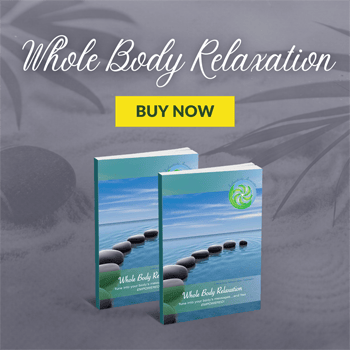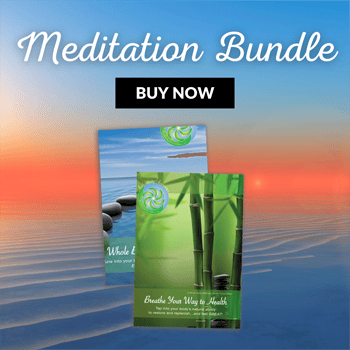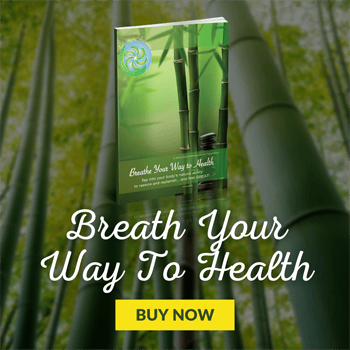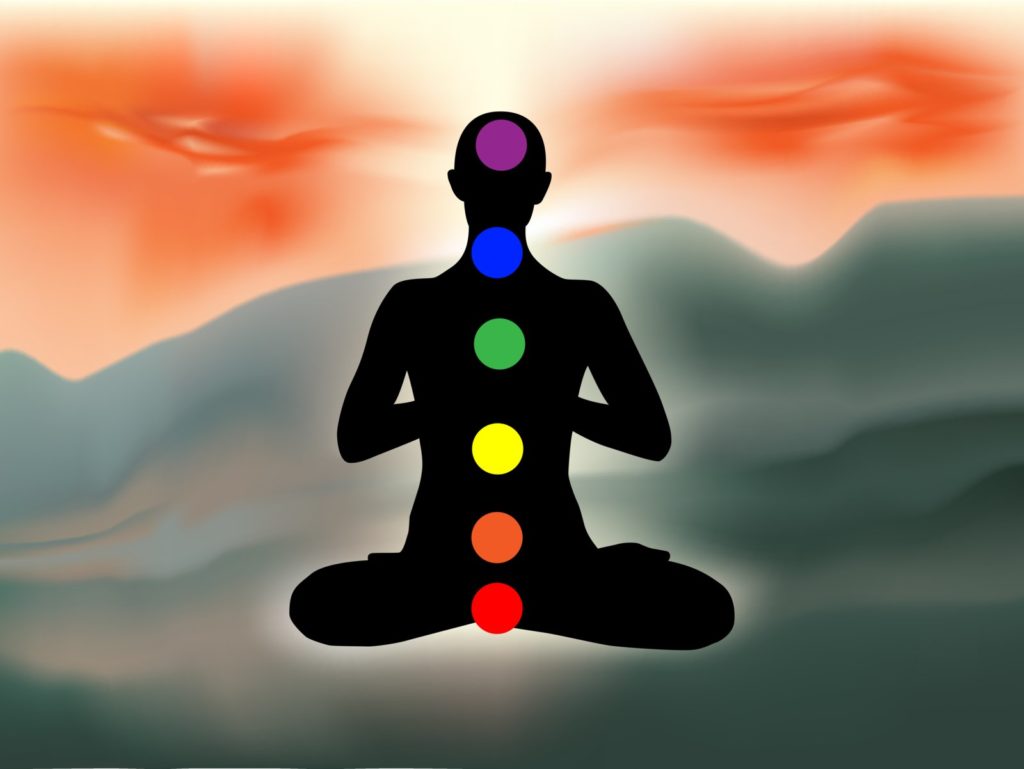
These Mindfulness Techniques & Strategies are Great for Overcoming Anxiety, Stress, Trauma, and Encouraging Healing
Mindfulness Exercises and Activities to Cope with the Stress of the Coronavirus
These are unprecedented times and ripe for the seeds of fear, yet how big they grow is up to us. As such, at no other time has it been more important to not let our fears go unmanaged. Untended fear feeds off itself and leads to feelings of anxiety, worry and eventually panic. In this sense, fear is the virus and the mind is our vaccine. We want to share powerful strategies you can use to support you during this time. We have put together a series of videos that take you step by step through practices we find very helpful. These strategies range from mindfulness, meditation and breathing, bilateral stimulation, acupressure, somatic release, strengths, cognitive therapy, energy psychology and NLP. We selected a range of techniques so that you can build your toolbox based on what resonates with you most. It is not a one size fits all approach, so please try out different techniques and discover what works best for you. Personally, we alternate between most of these techniques in our practice at any given time based on what feels right.
- Title
Hi. My name is Dr. Hillary. And I’m Dr. Kim. And we’ve come to share with you some strategies and methods to help you get through this very challenging time. And these strategies, we use ourselves, we’re working with our clients to use these for the purpose of feeling more embodied and therefore more present to ourselves during this time. It’s all about how we’re able to quiet our mind and relax our body and keep our hearts open. And for that we’re working on the nervous system and nervous system regulation, right? Sometimes we feel like these outer circumstances that are happening for all of us need to dictate how we act on the inside or how we respond. And yet, these are tools or practices to help us feel more empowered with how we’re kind of hopefully thriving through this. Yeah, ‘cause it has everything to do with how connected we are to ourselves and how we connected we stay to each other, right? We hope you find this useful and supporting you through this time and supporting you to stay connected in your lives.
We have found holistic, integrative practices are extremely effective for calming the nervous system, releasing fear and stress while supporting you to come home to the power of your mind body connection. This allows you to put the power back in your hands and focus on the only area you have true control – within you. It has been said, ‘the only way out is in’. These practices will guide you within to find yourself and your authentic power. These are our go-to resources right now as well. We are here to support you, please let us know how we can help.
The Happy Map Mindfulness Technique For Trauma Recovery and Stress Reduction
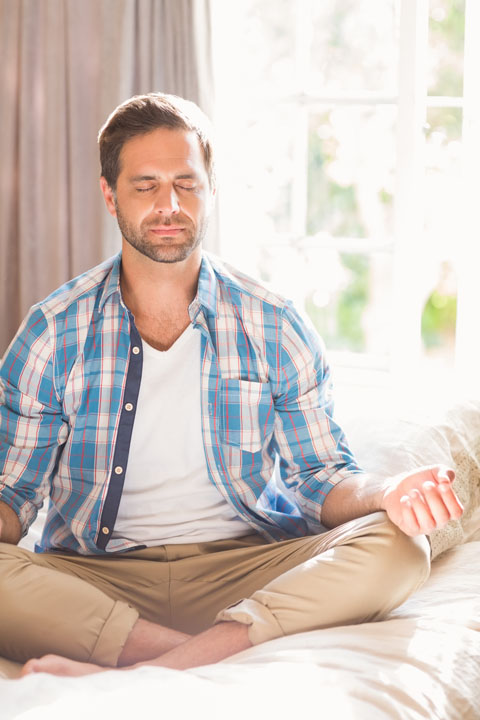
- Title
Hi. My name is Dr. Hillary. And I’m Dr. Kim. And we’d like to share with you the Happy Map Technique. It’s a four-step strategy that we put together, specifically designed to help you in decreasing stress, anxiety, tension. And increasing and actually rewiring your brain for happiness and optimism, contentment, and calm. So we’re gotta go through this process together. First thing to do is to choose an issue that you’d like to work with, something that you, perhaps, experienced in your life that’s stressful, that you just wanna have a little expansion around or feel better around. When you come up with that, we’ll start. So just take another few seconds, something you wanna work with, feel different about. Alright, so the first step. So by, you’re gonna get comfortable wherever you are, chair, couch, bed, perhaps. And allow your body to be in a comfortable position, and if you feel good close your eyes. And bring your awareness to your breathing. Breathing is the first step. It’s something that we’re always doing and yet when you bring your awareness to your breath, it’s the fastest way to actually shift your state. So notice as you breathe in, feel your abdomen expand. As you breathe out, feel your abdomen contract or move back down. ‘Cause ideally, if you can breathe in your nose and out your nose. So this is to a more conscious breath in, feel your belly rise, breathing out feeling your belly move back down. And now, allow your mind to be directed to an area in your body that you feel a physical sensation, something that may match this issue that you’re dealing with. It’s the mind-body connection. So something, it could be a lump in your throat. It could be pressure in your chest. It could be some tightness in your abdomen or your stomach. It could be discomfort in your back, wherever your body seems to be talking to you. Some area where your body feel somewhat contracted related to this issue. It may be very subtle. It may be really stronger. And we’re gonna invite you to breathe in and out of this area. So send your breath to this part of your body that you’re aware of a contraction of some kind and just take several rounds of breathing in and out of that particular area. Doing your best to stay out of the story that you’re working with, just stop into this sensation and in seconds to minute you will likely feel a shift. It is the loudest to occur. You might even notice that as you exhale, so allowing this contraction to be released. Okay good. Good. And now, the third step is using the power of your mind. And now as you are asking yourself some questions that you would want the answers to. So, for example, you might ask yourself, regarding this situation, what can I control? What is in my control? ‘Cause so much isn’t enough, but what can I control about this situation? Be sure you’ll keep breathing as you’re doing this. Do the belly-breathing. And ask yourself now, what do I want? What do I want regarding this situation? What I like to happen? What’s my ideal outcome given this situation? Just allow that to come to you. Okay good. And now, what do I appreciate about this? What can I appreciate? What do I appreciate about this particular situation that I find myself in or that I’m working with? And allow that to come to you as well. Good, and just keep breathing. You’re doing great. And the fourth step is bringing in your strengths. We all have inherent strengths. So allowing yourself to focus on, say three of your strengths. What are you good at? Are you creative? Are you hopeful? Are you fair? Are you a truth-teller? Or do you have a strong sense of perseverance? And allow three of these strengths be applied to this given situation. And you might use it in the way of saying, “how was I loving in this situation”? How can I apply my strength of being loving to this issue? Or hope? Good. Perfect. And now when you feel ready, just go ahead and gently bring yourself back and you can open your eyes. And how was that for you? It was very calming. And enlightening. I noticed I focused on an area of feeling a little bit of heaviness or stress around some of the state of the affairs in the world, and I, I felt that weightiness in my body more in my core and as I started to breathe it moved, not completely but enough especially in this amount of time. I know if I stuck with it a little longer, I would’ve completely felt a shift. But then I was able to tune in to, just being able to connect to my strengths of my own since the perseverance and spirituality around that issue. Great. Yeah. Perfect. Focusing on what I can control inside. So this four-step process is something that you can use at any time. And we really recommend using it on issues in your life where you feel any stretch of contraction or any sense of defeatedness or not-fully in your power. And just watch what happens. We’ve been using it for years, and personally and professionally we find it to be really profound. So regular use of it helps connect the mind and body and helps to rewire your brain for happiness. Yup. We hope that you practice it and find it very useful in your life.
Eye Movement Meditation for Stress Reduction
Calm your nervous system, release stress and anxiety and become centered with this meditative practice. During this meditation you will be using eye movements which access different areas of the brain and nervous system. Bilateral movement of your eyes has been shown to stimulate your right and left brain hemispheres and calm the nervous system. This has a powerful influence on your entire physiology. The combination of slow-motion eye movements and coordinated breathing energy in this meditation is a very effective strategy for calming the mind and body. It helps to release stress, anxiety, trauma and release energetic blockages. It further supports focus, clarity and mind body connection.
- Title
And here’s a practice that combines eight different eye positions with your breath. And we’re always gonna be practicing the diaphragmatic breathing when we’re doing these exercises because it’s the fastest way to bring your body into a calm and relaxed parasympathetic state. And the diaphragmatic breathing, you know you’re using your diaphragm muscle when you feel your abdomen rise or expand as you breathe in. And then feel your abdomen contract or move back down as you breathe out. And then, ideally, as you’re breathing with in your nose and out your nose. Because this also maintains more of this relaxed state in your body rather than when we use our mouth for breathing, it kinda brings in more of a stressful state. All right, so what we’re gonna be doing with this, as you’re inhaling and exhaling is, and you have your eyes closed, so we’re give you an idea of how it looks before we do it. So the first eye movement would be moving your eyes up to the left-hand corner of your peripheral vision and then back down to centerwards pretty much straight ahead. And you will be moving up to the right hand corner and back and then to your left side, back to your right side, and back, and to the lower left-hand corner, back to the center, lower right-hand corner, back to the center, and then you’ll be moving down, back, and up, and back. And also, by the way, if you’re left-handed, then go ahead and you’ll be starting a little differently, you’ll be going to the right-hand side first and then the left-hand side. Alright, and then. It would be about 10 percent of us would be left-handed. Alright so I just wanna invite you to close your eyes and allow your body to be positioned at a very comfortable place, comfortable position, regardless of what you’re seated on, whether it’s a chair or a couch or a bed, the floor. And take a minute to connect with your breathing, so as you inhale feel your abdomen gently rise and gently fall as you exhale. And then with your eyes closed, be looking straight ahead. Okay good. And now as you inhale, I’d just wanna invite you to look up in the left-hand corner of your visual field. As you breathe in, and as you breathe out, bring your tension back to the center. And now inhale up to your right side, exhale back to the center, and inhale to your left side, horizontally, moving back to the center, inhaling to your right side horizontally, back to the center , inhaling down to your left side , back to the center , down to the right-hand corner , back to the center, and now straight down, good. And back to the center, and now straight up. Good. And then back to the center, and then just take a moment to notice how you feel. And then gently open your eyes. Oh, I love that. Oh, I felt just really calm inside doing it, and now, and I I just felt like I wanted to keep doing it. Yeah. And I think ultimately you could do that two to four rounds, right? You could continue on with it, and I, I think one, one kind of an important tip to work with is only go as far as your eyes kind of wanna go. So don’t stain your eyes when you do this. Yeah that’s right. Just really allow your eyes to relax, and you just let them float in however far they wanna go up or down or side to side, they will find their own rhythm. Yup. So it is, it’s like a floating, easily done, no straining, just gentle. And like Hillary said you can go several rounds. And sometimes, you feel the shift pretty much immediately. And other times, it may take a minute or two or a round or two. But this is a great great technique to move in to the parasymphatetic part of your nervous system. And yeah, and you know what’s awesome about it as well that it for some people that don’t like meditation as much or find meditating kind of challenging, this eye movement meditations that we’re working with here, and this one can really be extended for, for a several minutes. It’s a great way to meditate and calm your body and mind without necessarily needing to go into that silent type of experience of meditation. It’s true and you know one of the point around it which I’ve actually done several times is, you don’t, I mean ideally you do it when you can and you close your eyes and get the maximum benefit, and sometimes I found myself doing it when I’m in a situation I just wanna calm myself and maybe I can’t close my eyes because I’m in a meeting or around friends or people, and I feel differently inside. So that’s another possibility. Yeah. Alright.
Stress Reduction Technique to Increase Positive Emotions, Relaxation, and Homeostasis
Stimulate the Vagus nerve through the oculorcardiac reflex with this stress reduction practice. Regular stimulation of your vagus nerve strengthens neural pathways that connect your mind and body, leading to an increase in positive emotions, relaxation and homeostasis. Activating the relaxation response is like sending a message through your entire body that says, “I am OK. I am safe. Everything is going to work out.” We often use this practice in conjunction with brainspottting therapy a powerful method for healing trauma. This practice activates the healing power of your vagus nerve to repair from the residue of trauma especially as related to the fight, flight, freeze, collapse, or appease nervous system responses.
- Title
Hi. My name is Dr. Hillary. And I’m Dr. Kim. And we’d like to share with you a simple meditative process. It’s actually a breathing exercise called One to Four Breath or Even Breathing. And it’s pretty simple in nature. It is really powerful to calm the mind and the body. There’s a lot of research behind how this works to regulate our nervous system and allow us to come from a place where we’re able to choose how we wanna respond to situations because we’re able to feel calmer on the inside. We liken it to finding the eye of the storm internally, inside you can find that space of peace and calm even though outside of you things may be going on that you can’t control. And so for this you’re going to breathing be breathing in to the count of four and out to the count of four. Again it’s very simple in nature, but really powerful. So find yourself if you’re, you can be sitted, that’s wonderful. Uncross your legs, feel your feet on the ground. You can do this while walking as well. And you’re going to be breathing in and your abdomen is expanding to the count of four and exhaling your abdomen contracts to the count of four. So let’s do this together. Go ahead and get comfortable, if you feel okay to close your eyes do so. Otherwise it’s okay to have your eyes open. And so breathing in one, two, three, four. Exhaling, two, three, four. Inhale, two, three, four. Exhale, two, three, four. Breathing in two, three, four. Out, two, three, four. In, two, three, four. Out, two, three, four. Go ahead on your own, counting to yourself, in to four, out to four. For several more breaths, breathing nice and deep, the count of four, and out to the count of four. Just feeling your body relaxed with each in-breath and out-breath. Another couple of breaths. Good. Feel your feet on the ground. Notice how your body feels now. A very quick practice. Way more relaxed, really. It’s really simple but it really makes a difference, way relaxed. Wonderful. Yeah. It’s great. Yup, so another one we wanna share with you that we both like is called box breathing or four-sided breathing. And so for this, obviously similar position that you’re in. For this one, we’re just gonna walk you through it now. Inhale for a count of four. Two, three, four, hold, two, three, four. Exhale, two, three, four. And hold, two, three, four. So inhale, two, three, four. Hold, two, three, four. Exhale, two, three, four. Hold, two, three, four. Inhale, two, three, four. And take yourself through the next two rounds. Just counting. Count of four. Good. And then when you are ready, gently bring yourself back. And open your eyes. Nice. Yeah. Yeah. Good work. Another simple, yes, simple practice. That was great. Yup. That was great. So rhythmic breathing or even breathing one to four and then there’s box breathing or four-sided breathing. Yup. Those are two different techniques you can use for meditating and/or for calming and regulating your nervous system or finding the eye of your storm that’s based inside yourself where you can experience a sense of grounded peace and presence no matter what’s happening around you.
Mindfulness Practice Breathing Techniques to Relieve Trauma & Anxiety
Bilateral stimulation is a powerful technique for releasing stress, trauma and anxiety. It refers to the alternating stimulation of the right and left hemispheres of the brain and can be accomplished with eye movements, sounds and sensory stimulation. The Figure 8 is performed by following your finger or pen held directly in front of the bridge of your nose to start, then moving upwards to trace an 8 lying on its’ side, while following with your eyes. Repeat this three times with each hand, then both hands held together.
Acupressure Technique to Reduce Stress & Anxiety – Emotional Freedom
Emotional Freedom Technique is a powerful acupressure technique that reduces stress, anxiety, pain and depression. Studies show it calms the amygdala, the brains fear center. It involves bilateral tapping on a series of acupressure points that are associated with emotions. It is rooted in Traditional Chinese Medicine, TCM, and energy psychology. This can be used in situations when you need a quick way of calming an emotion or changing a troubling internal reaction. It combines self-affirmation with a simple tapping technique.
Grounding Meditation
The Grounding Meditation is a guided practice designed to soothe, calm and relax your nervous system and bring your awareness more fully into the present moment. It incorporates breathing with mindful awareness. As you practice this meditation regularly you will feel more centered and grounded in your mind and body. When you are calm on the inside your life tends to be calm on the outside.
Mindfulness Breathing Practices For Healing
There is a specific style of breath that has been shown to be especially helpful in calming and soothing the body and mind. This is diaphragmatic breathing which is also known as belly breathing. It fills your body with healing oxygen, stimulates the body’s natural ‘relaxation response’ and soothes muscle tension. It involves breathing so that your abdomen expands as you inhale and gently contracts as you exhale. There are two practices in this video that incorporate belly breathing with counting. Rhythmic or Even Breathing has been shown in research to calm the nervous system. Specifically this practice stimulates the vagus nerve and the parasympathetic nervous system. This has numerous benefits on physical, emotional and mental well-being. The 1 to 4 rhythmic breath refers to the number of counts you take while inhaling and exhaling. The second practice is called Box Breathing or Four Sided breathing and it is equally powerful.
Mindfulness Meditation Practice
Decrease stress, anxiety and distraction with this simple Mindfulness Meditation Practice. Mindfulness practices have been shown to decrease stress, declutter the busy mind and improve performance. As you decrease stress and mental clutter, you naturally increase your clarity of focus and attention. Consider the value of having a method for ongoing energy, presence and flow throughout your day. In a short ten minutes of mindfulness you can gain benefits found only after four hours of sleep.
Benefits you can expect from practicing mindfulness;
Increase focus, decision making ability, flow, concentration and productivity
Decrease stress, fatigue, anxiety, distraction, impatience, depression and isolation
Improve memory, creativity, positive emotion, problem solving ability and energy
Regulate emotions and access the part of your brain for empathy and compassion
Mindfulness Meditation For Healing and Stress Reduction
Based on the work of Dr Andrew Weil, this simple, yet powerful breath has been recommended as one of the most powerful tools for managing stress and health problems related to stress. Breathing practices are used not only to center us but also to address a number of health concerns. The 4-7-8 breath refers to the number of counts you take while inhaling, holding your breath, and exhaling. Breathing practices that involve extending the exhale longer than the inhale have been shown to stimulate the parasympathetic nervous system. This has numerous benefits on physical, emotional and mental well-being.
Techniques and Strategies to Reduce Stress from Trauma
This strategy will help you release traumatic issues from the past, let go of stress and gain new perspective on issues. It has roots in neurolinguistic programming and is alters how your brain encodes and remembers upsetting issues from the past. The brain encodes issues or events you determine to be meaningful, either positive or negative, in motion, color, they are bright, and they are generally magnified in size and rich in dimension. When you change the color to black and white, turn down the brightness, change the size and alter other dimensions you literally change the way your brain retrieves this information and the consequential effects you experience physically, mentally and emotionally.
Techniques & Simple Practices to Release Past Issues and Reduce Stress and Anxiety
Shrink IT! And Frame IT are two highly effective yet simple practices for releasing past issues, reducing stress and anxiety and shifting your state. They have roots in neurolinguistic programming and alter how your brain records and retrieves memories. They allow you to gain distance or space from the memory and any stressful feelings about it. The brain codes meaningful experiences into images and it stores these images related to personal meaning. Issues or events you determine to be meaningful, either positive or negative, are stored in motion, color, they are bright, and they are generally magnified in size and rich in dimension. When you turn down the brightness, change the size and alter other dimensions you literally change the way your brain retrieves this information and the consequential effects you experience physically, mentally and emotionally.
Phone/Fax: (619) 819-6841
Email: contact@authenticityassociates.com
Our office is located in Carlsbad, CA 92009
We also do nationwide sessions via Skype and FaceTime.
Please contact us for an appointment.


